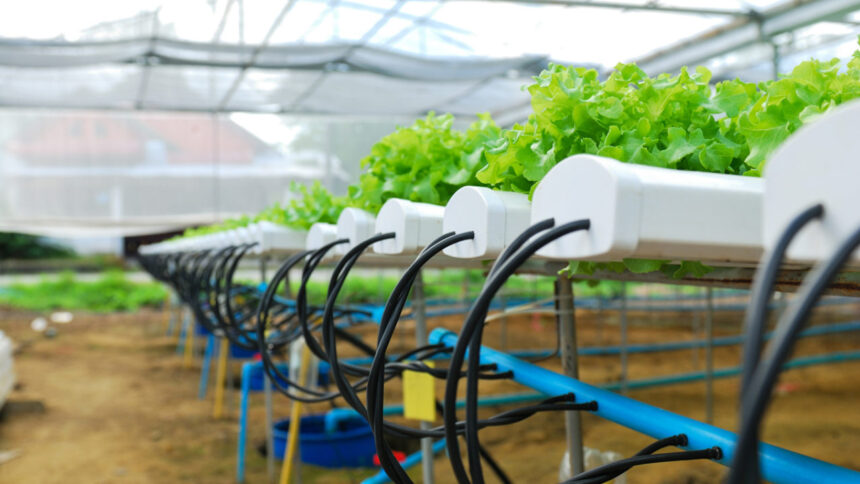Climate change has turned into a lived reality, and it is one of the most significant challenges many rural farmers in Zimbabwe face, as most agricultural practices are rainfall dependent. Many of these rural farmers are small-scale with limited access to financial assets, agricultural equipment and inputs. With a rapidly changing climate and limited access to agricultural resources, many rural farmers in Zimbabwe have found it challenging to engage in meaningful agricultural activities to secure livelihoods.
For decades, Tariro Moyo, a small-scale farmer in Matebeleland South, relied on the water
that flowed from Shashani River into dug-out trenches to irrigate her crops. Unfortunately,
due to climate change induced droughts some five years ago, some parts of the river dried up due to poor rainfall and siltation. The impact on 36-year-old Moyo and the other small-scale farmers at Tshelanyemba is devastating. Increased heat stress, rainfall intensity, and drought have reduced crop yields and once arable land is now unusable, leading to food insecurity.
With Shashani River drying up and climate change increasingly bringing unfavourable farming conditions, Tariro in 2019 realized she needed to find an effective solution to the
crisis.
As a mitigation strategy to grow more crops with less requirements, Moyo turned to hydroponic farming, a method of farming which involves suspending plants in a water solution with each essential nutrient necessary for a plant to grow, removing the need for soil. This way, plants can be stacked on top of one another in a climate-controlled greenhouse almost anywhere, instead of taking up acres of fertile land.
“With hydroponics, I have total control. I can ensure a steady supply of fresh produce for
my family, even in the harshest conditions. It is not just about producing food; it is about building a better life for my family and the community. Hydroponic farming has given me hope that we can adapt to climate change and thrive,” says Moyo.
Statistics underscore the urgency of the situation as climate-related shocks like droughts
and heat waves slashed agricultural productivity by 15% between 2015 and 2020,
according to the Zimbabwe National Statistics Agency.
However, according to The Zimbabwe Agricultural Research Institute (ZARI), yields for those who have adopted hydroponic farming have increased by 20% on average. A study by the University of Zimbabwe found water consumption can be reduced by up to 90%.
“We are witnessing the devastating impact of climate change on our farmers and
food security. Hydroponic farming is a powerful tool in our fight against this crisis,” says
Dr. Innocent Musoni, Director of ZARI.
Nearly 20% of Zimbabwe’s population are at risk of hunger, says Francesca Erdelmann, World Food Programme country director for Zimbabwe. Through hydroponic farming, however, Moyo is not facing food shortages because she has adapted to the challenging climate conditions by growing drought-tolerant crops that not only grow fast but also have high yields, like sorghum and watermelons.
“So far, I am only growing crops that I am certain will be of low risk because the hydroponic project is still small, and I am still practicing normal farming. As for maize, I ran a loss of US$1000 which I had used to buy maize seed and fertilizers. So, I am about to give up all of it and only focus on hydroponic farming and other new techniques which I am looking into tapping into,” said Moyo.
This innovative, soilless method has also offered a lifeline to Venensia Mukarati, a farmer on the outskirts of the capital Harare. Climate change which resulted in persistent droughts had rendered her 2.8-hectare plot barren. But using only 46 square meters, her greenhouse is overflowing with lettuce, cucumbers, spinach, and herbs
“Hydroponics is a godsend," says Mukarati, an accountant by profession. “We barely have enough water here, but hydroponics has slashed my water consumption and my harvest times. I used to wait 10 weeks for lettuce to mature, now it’s six.”
Hydroponics has also been a game changer for Mukarati. She now harvests 2,600 plants per cycle, a dramatic increase from 140 plants she harvested before adopting hydroponic farming.
She said, however, that the main drawback of hydroponics that may deter some Zimbabweans from adopting it is the costs associated with setting up the system since nearly all components needed to run it are imported. When she went into hydroponic farming six years ago, she imported a small hydronic system from Cape Town for US$900.
Though hydroponic is commonly associated with horticultural crops such as lettuce, tomatoes, herbs, and strawberries, it can be scaled up for larger crops, including staple foods like maize.
Southern Africa is experiencing a particularly brutal El Nino season. According to Lola Castro, acting regional director for Southern Africa for the WFP, the region is experiencing the worst drought in 100 years, threatening 27 million people with famine.
In Zimbabwe 7.7 million people, six million of them in rural areas, need food assistance. In response, the government is holding consultations for a Climate Change bill to advance mitigation and adaptation measures.
The director of the Zimbabwe Climate Change Management Department, Washington Zhakata, says the government is taking climate change seriously and is investing over a billion dollars every year to address the crisis.
“As a government, right now it’s mandatory for all ministries to ensure that they mainstream climate change in their budgeting and planning to provide US$1.2 billion every year,” he said.
With support from Fredrich Naumann Foundation through The Voluntary Media Council of Zimbabwe.

